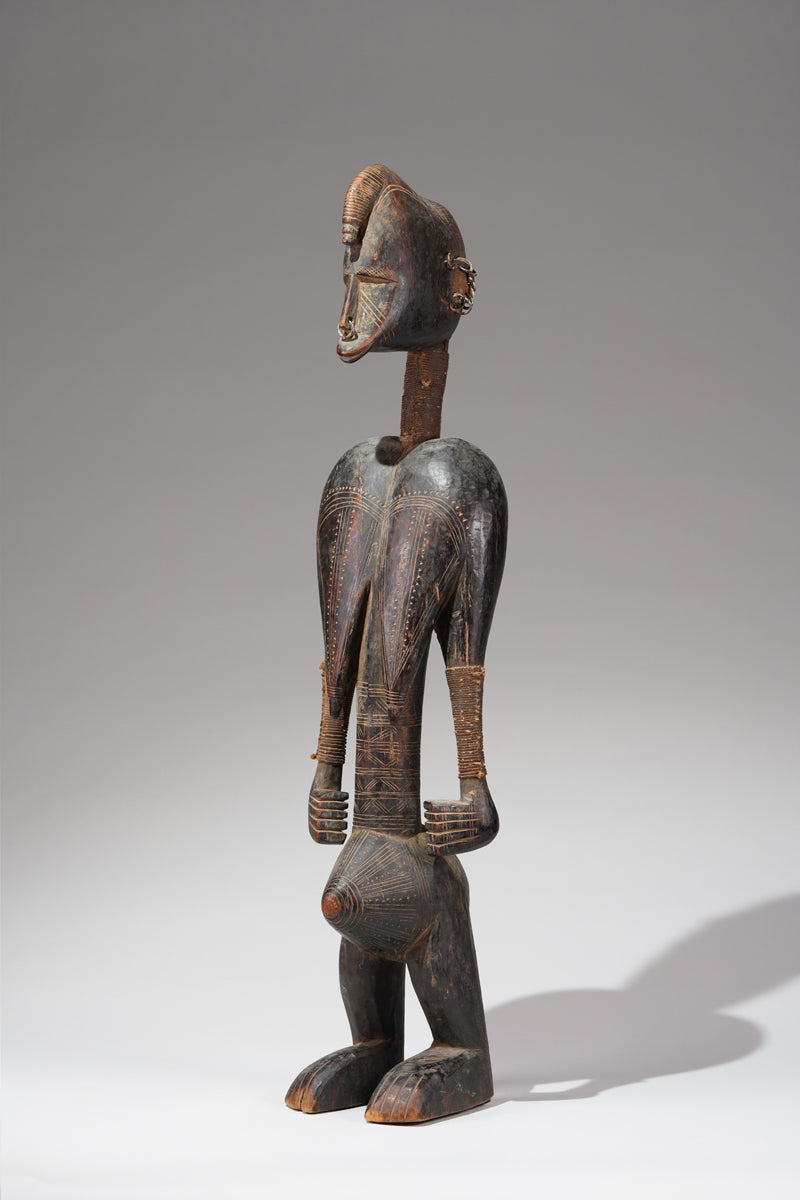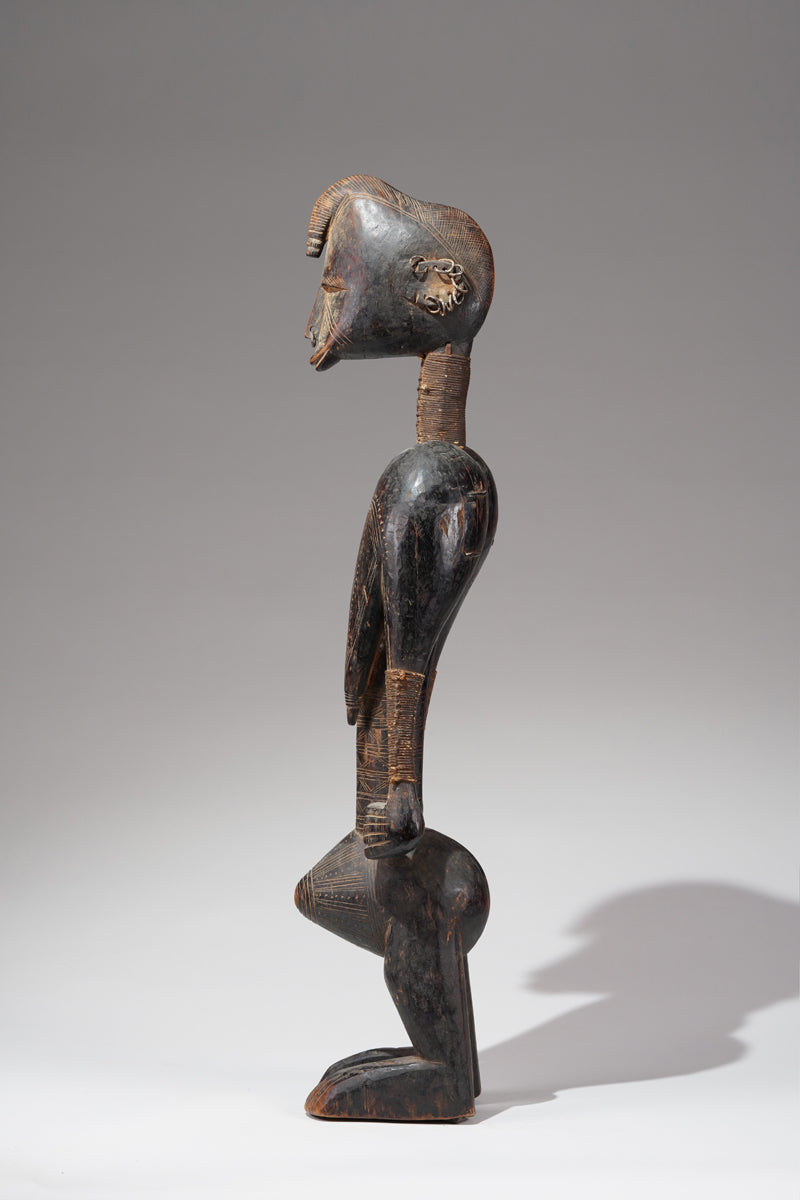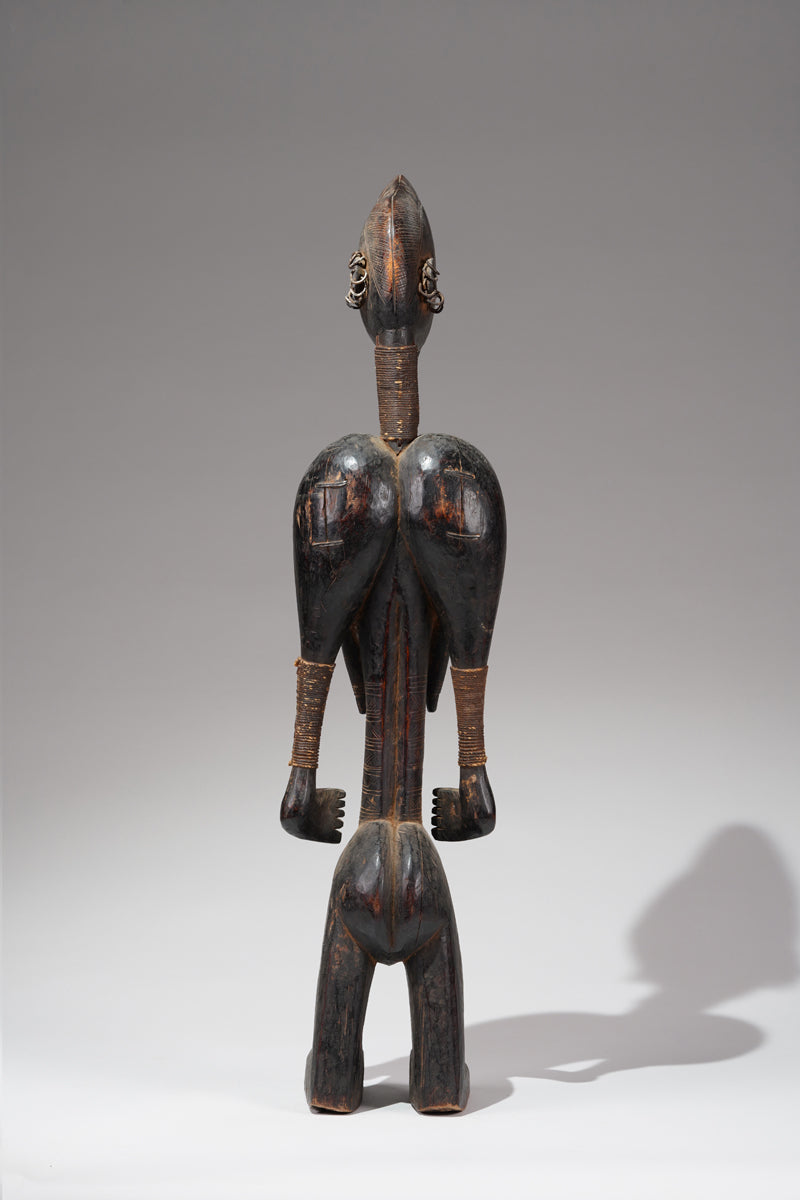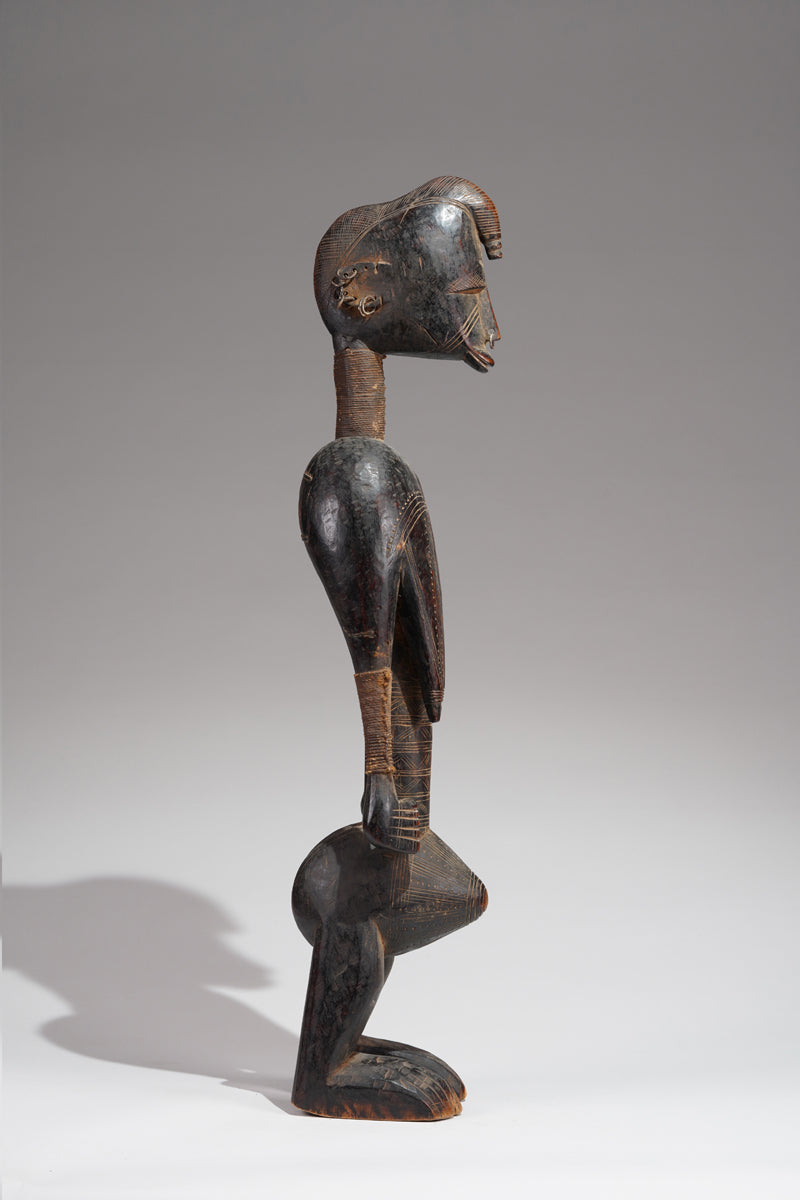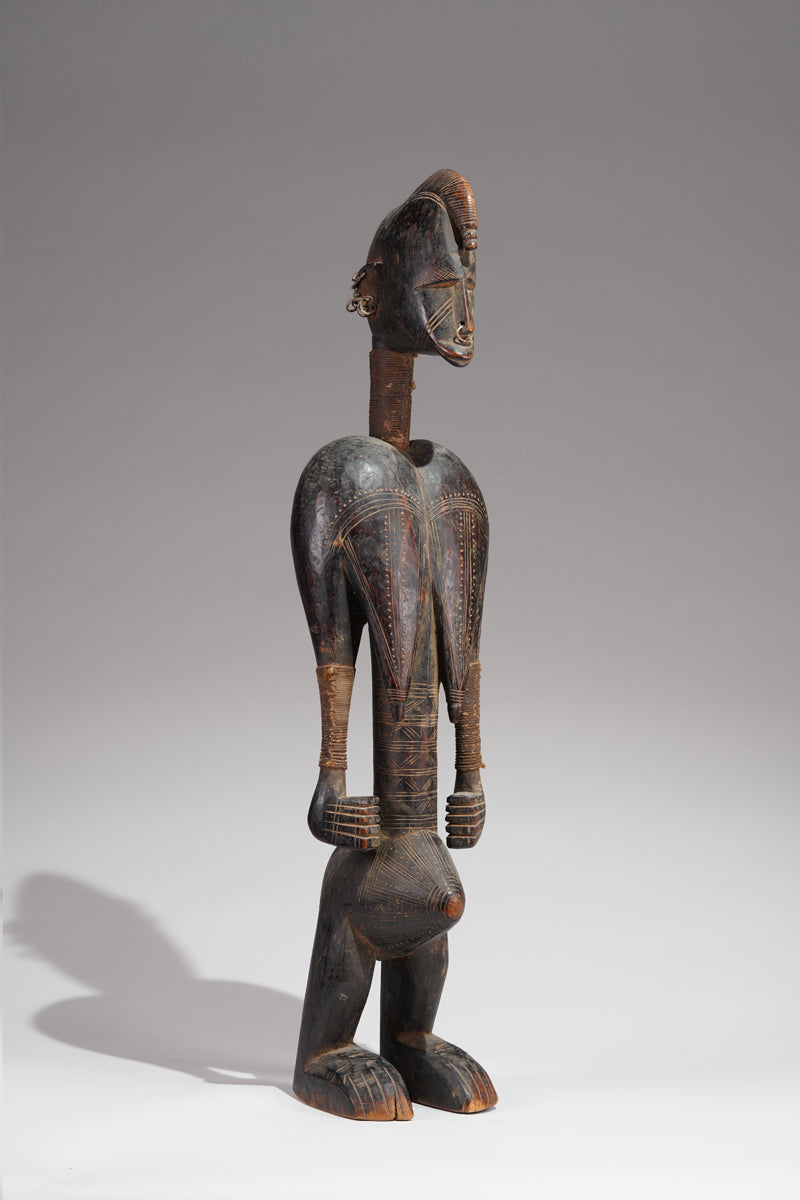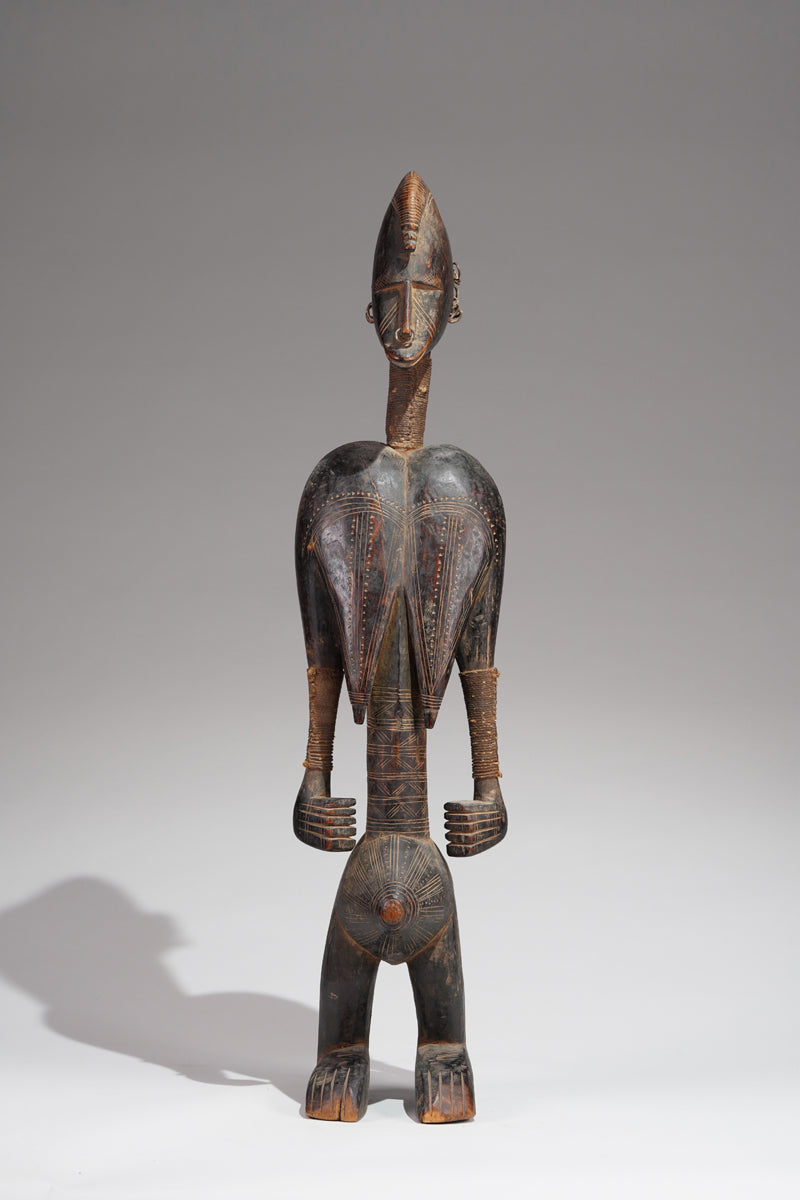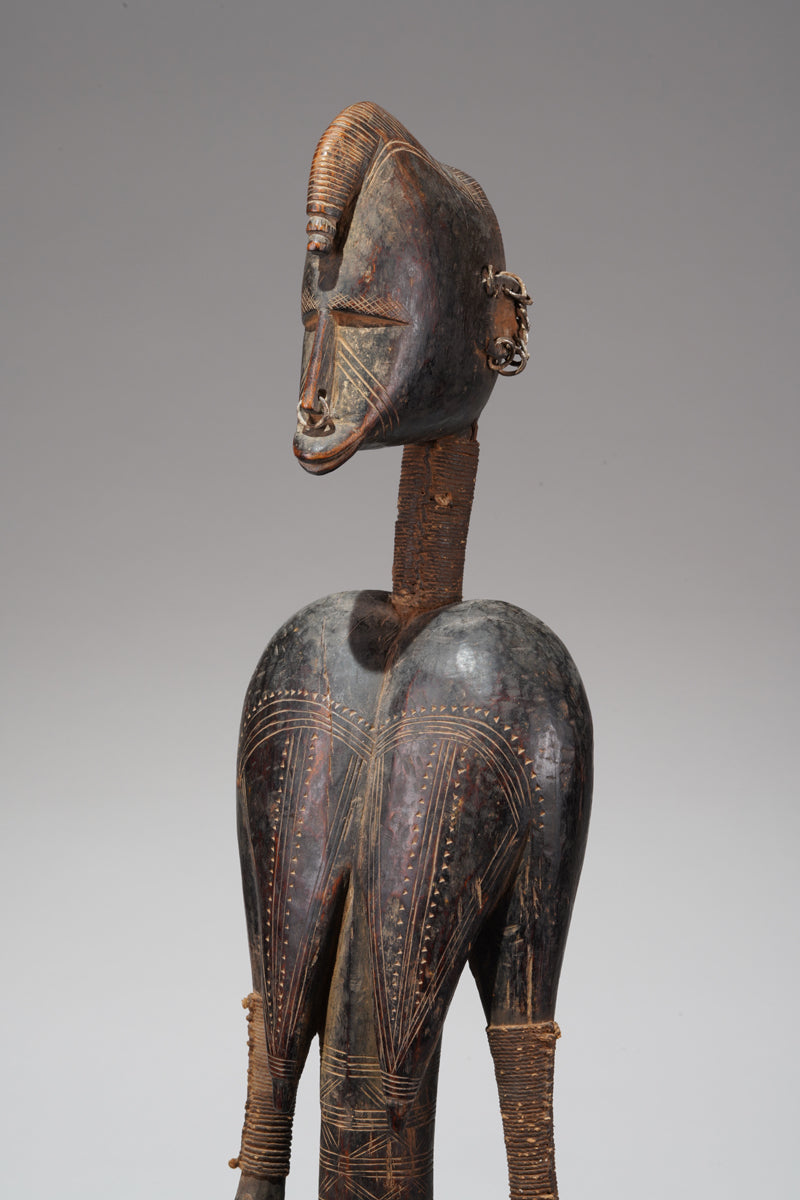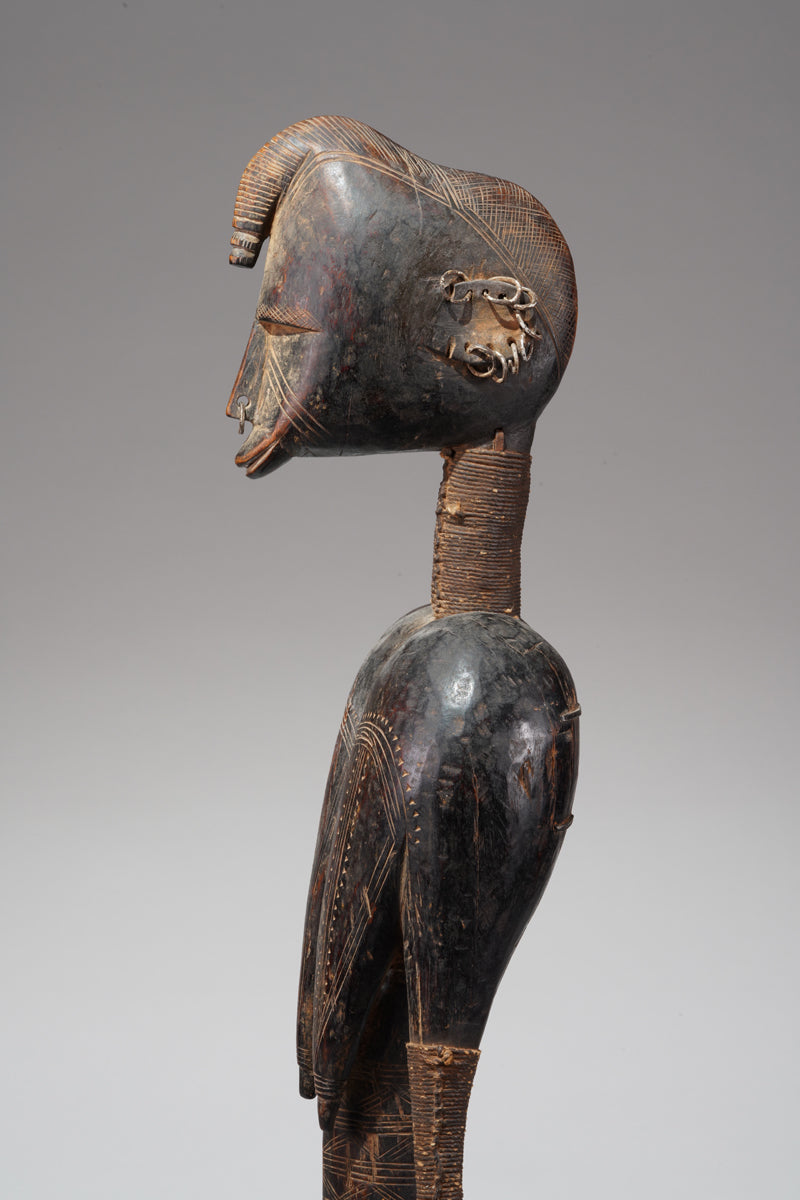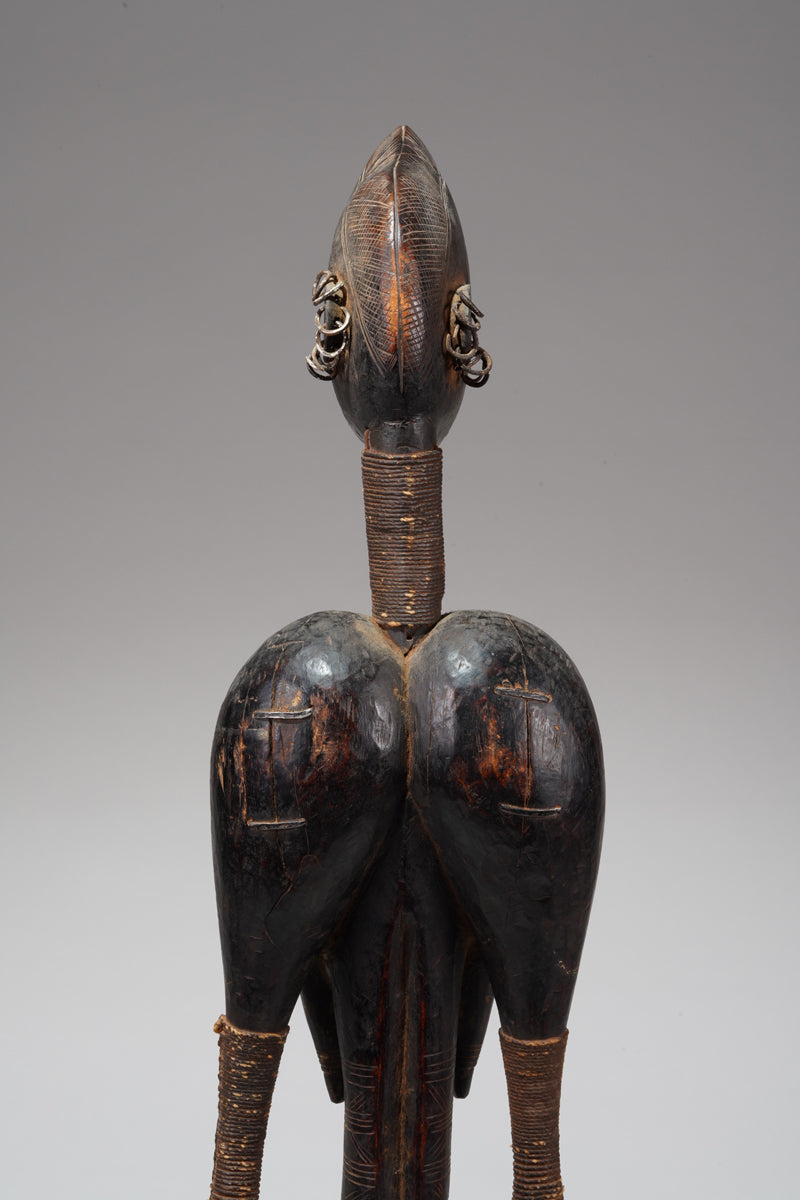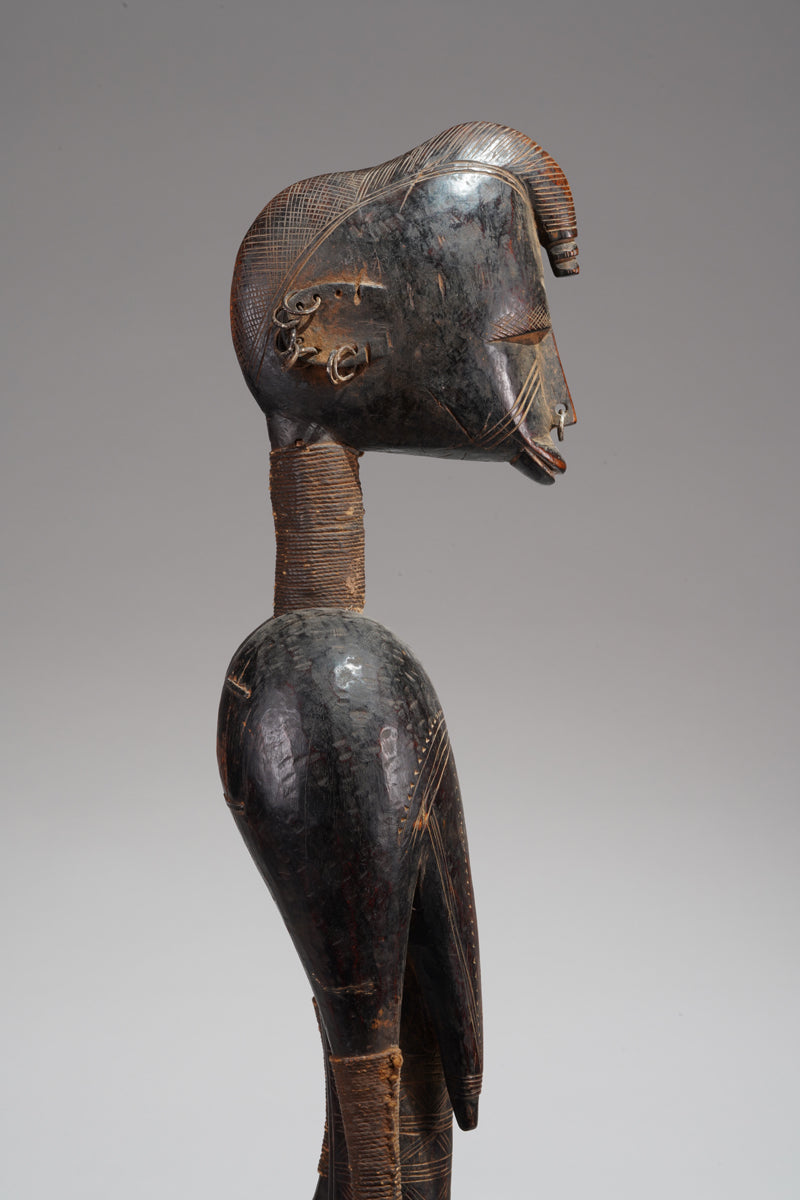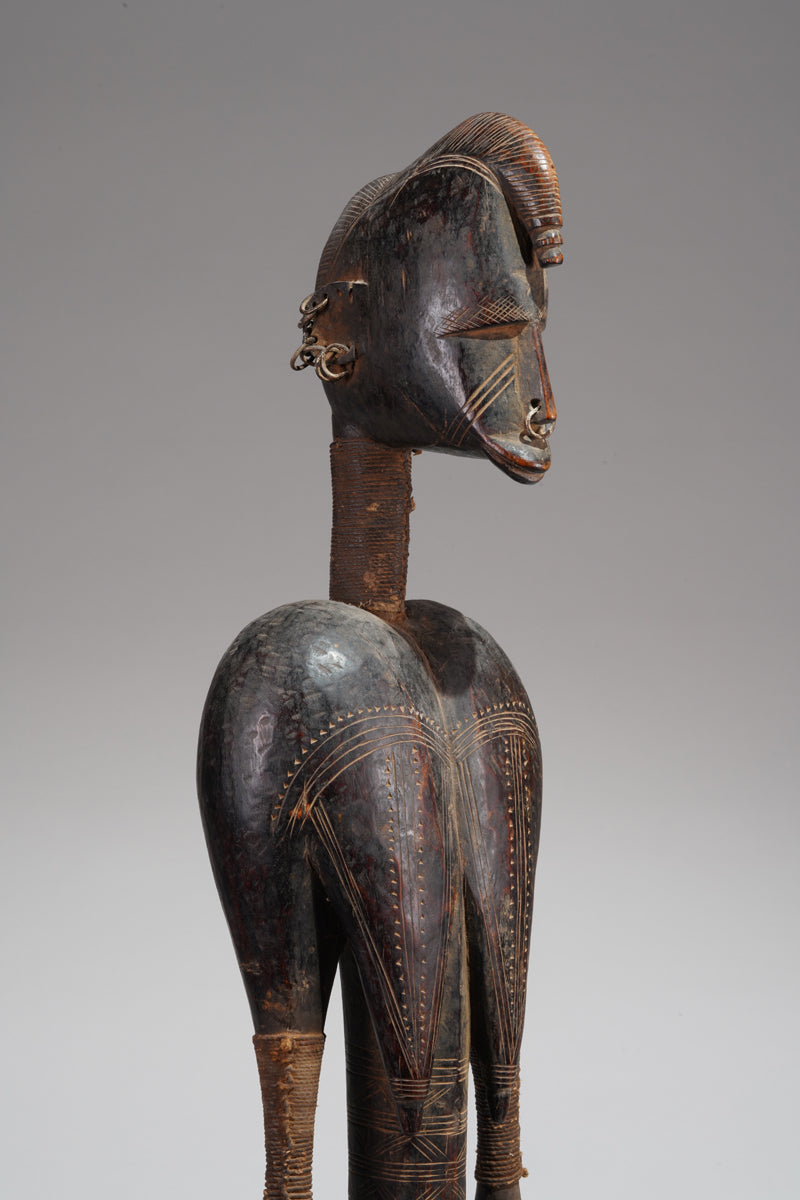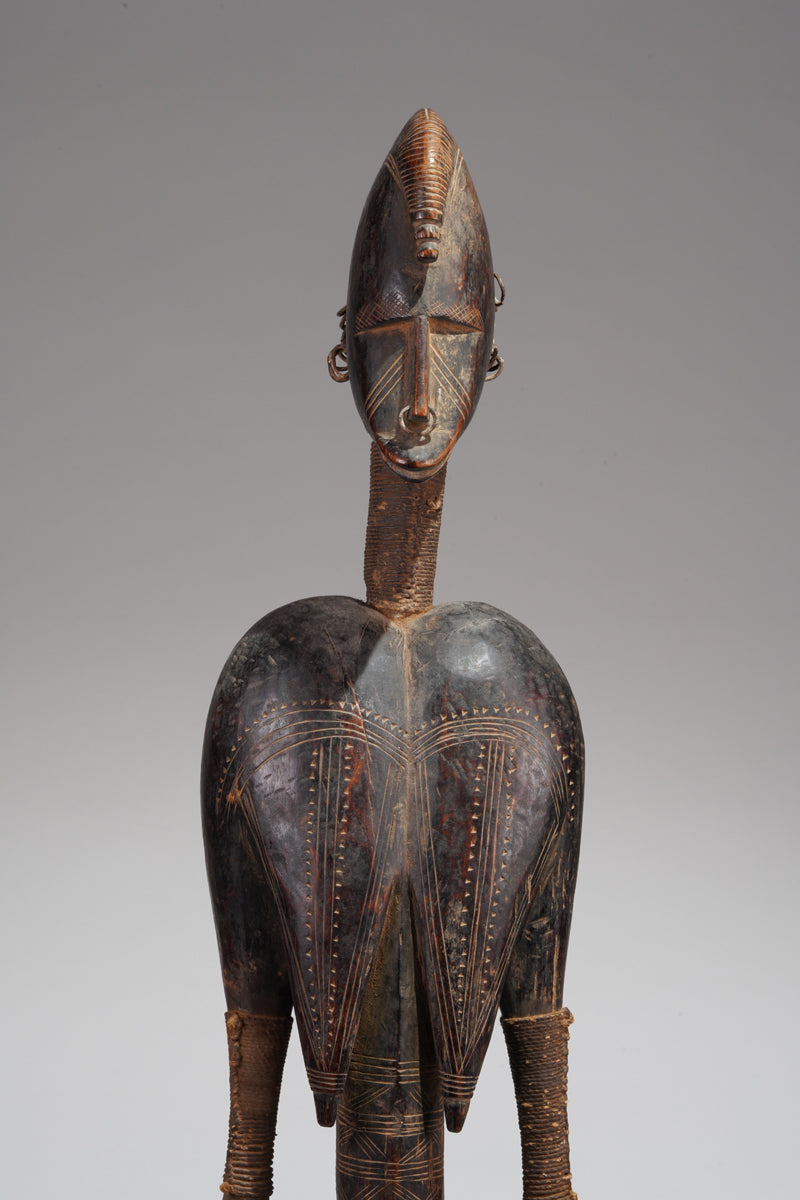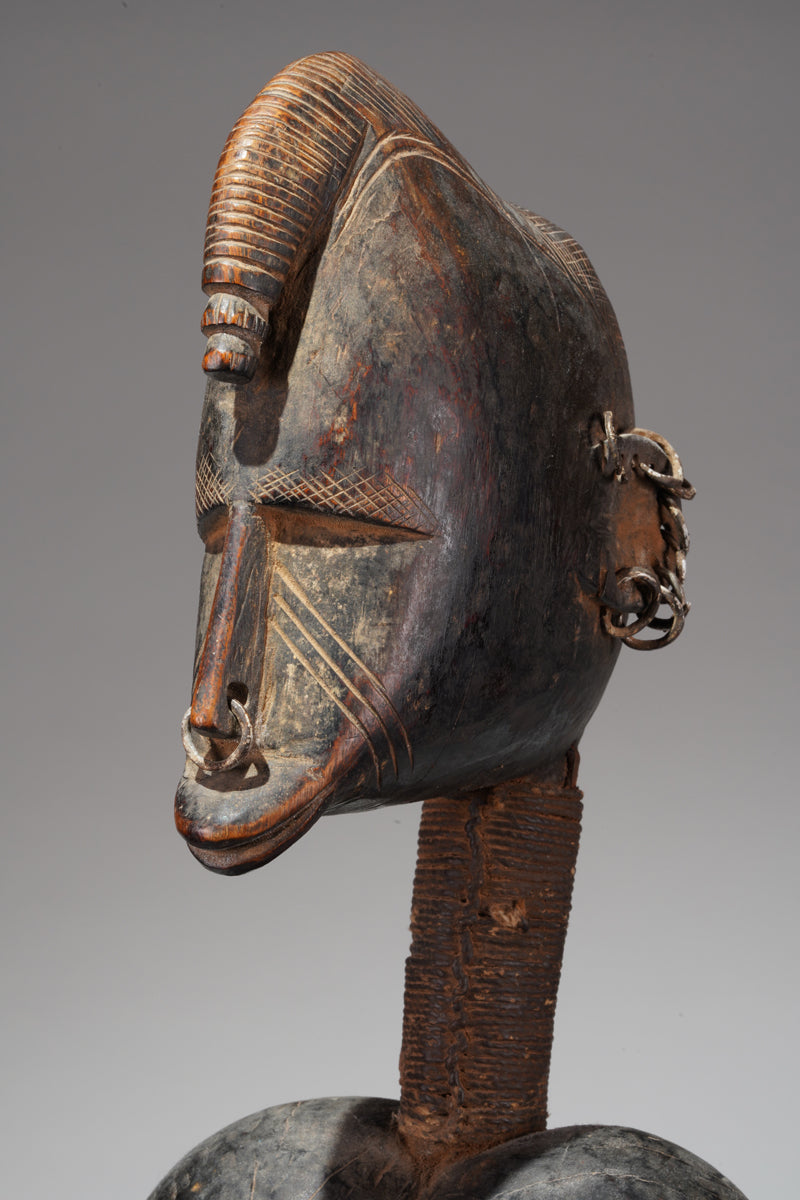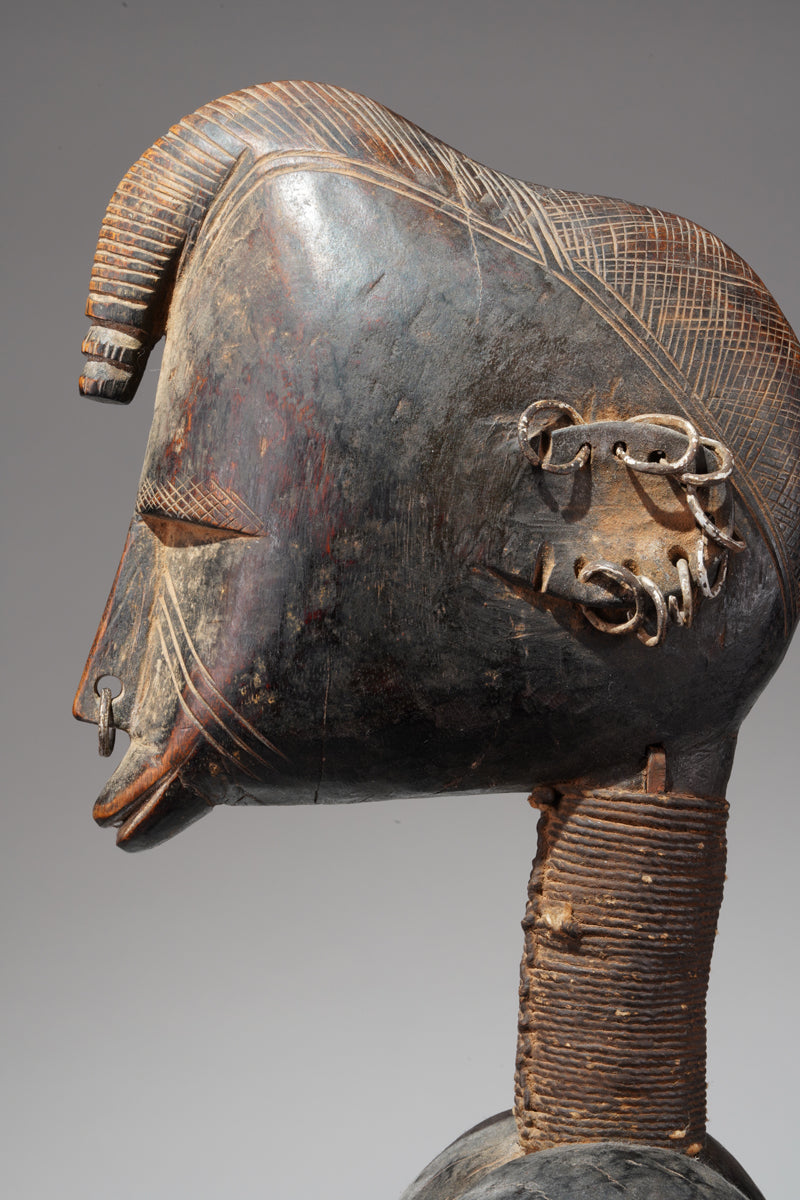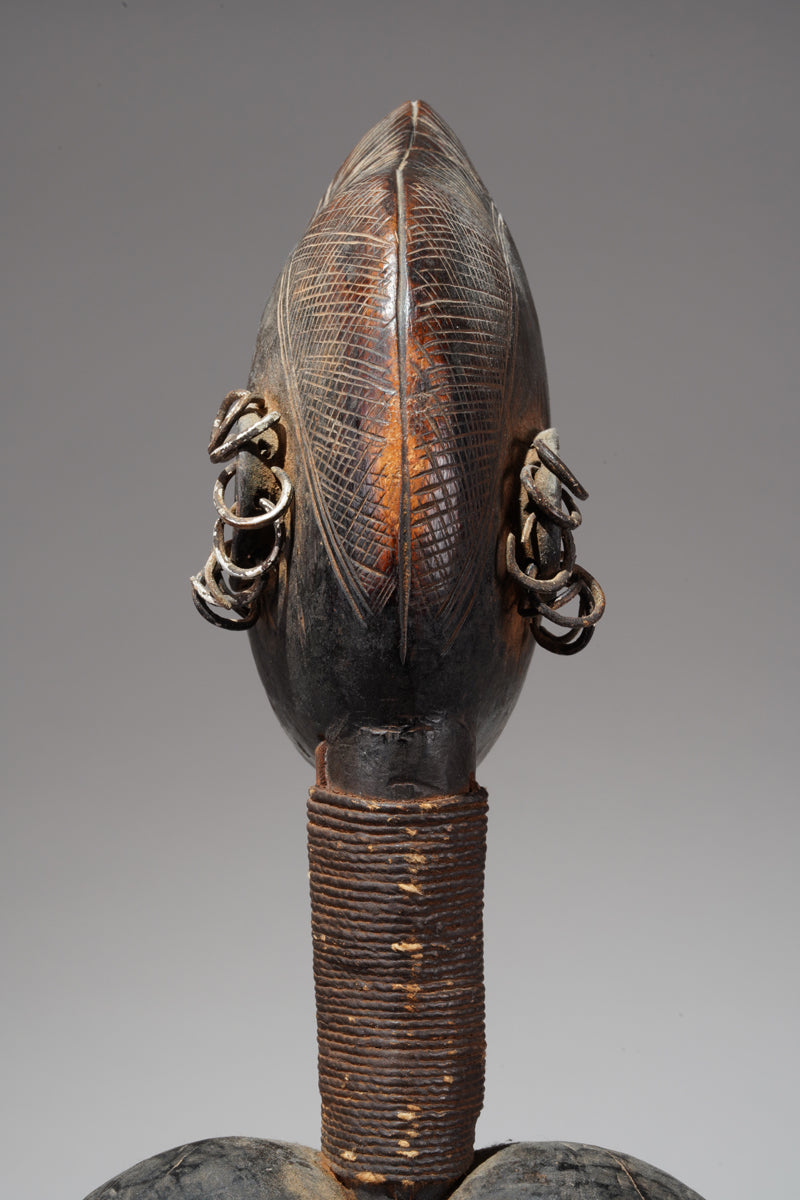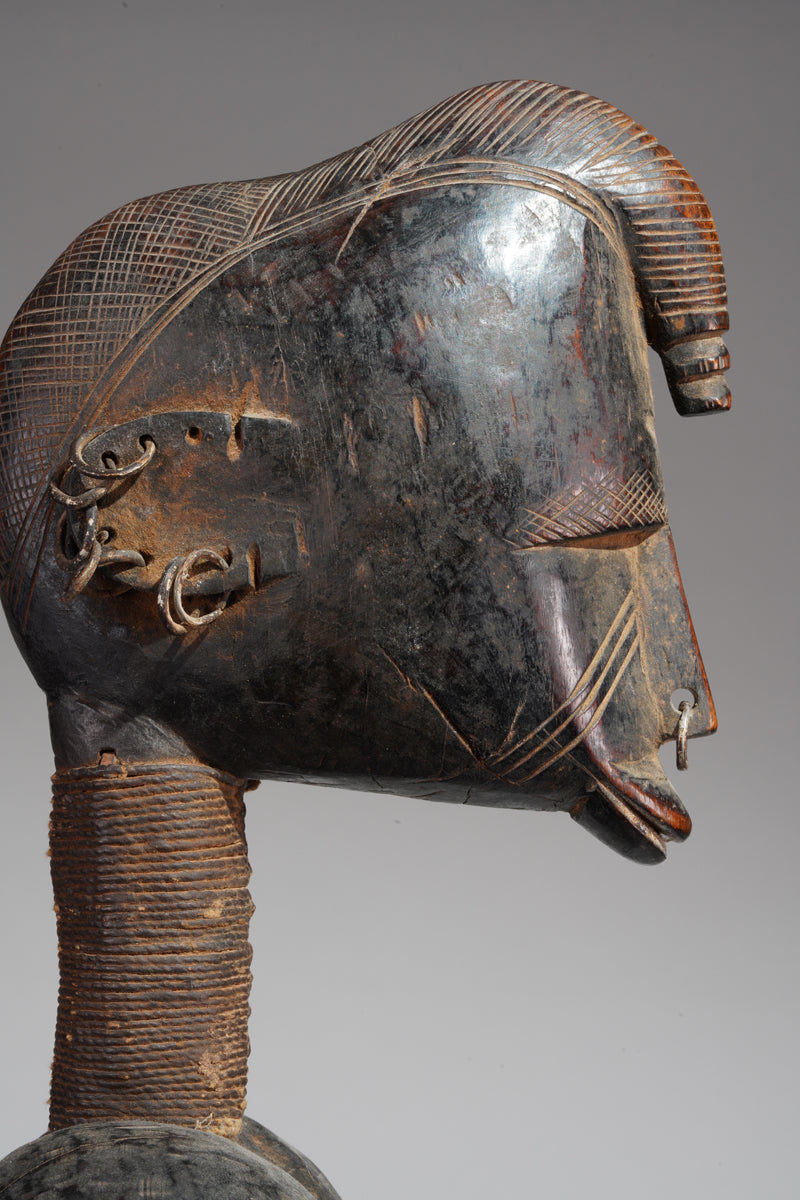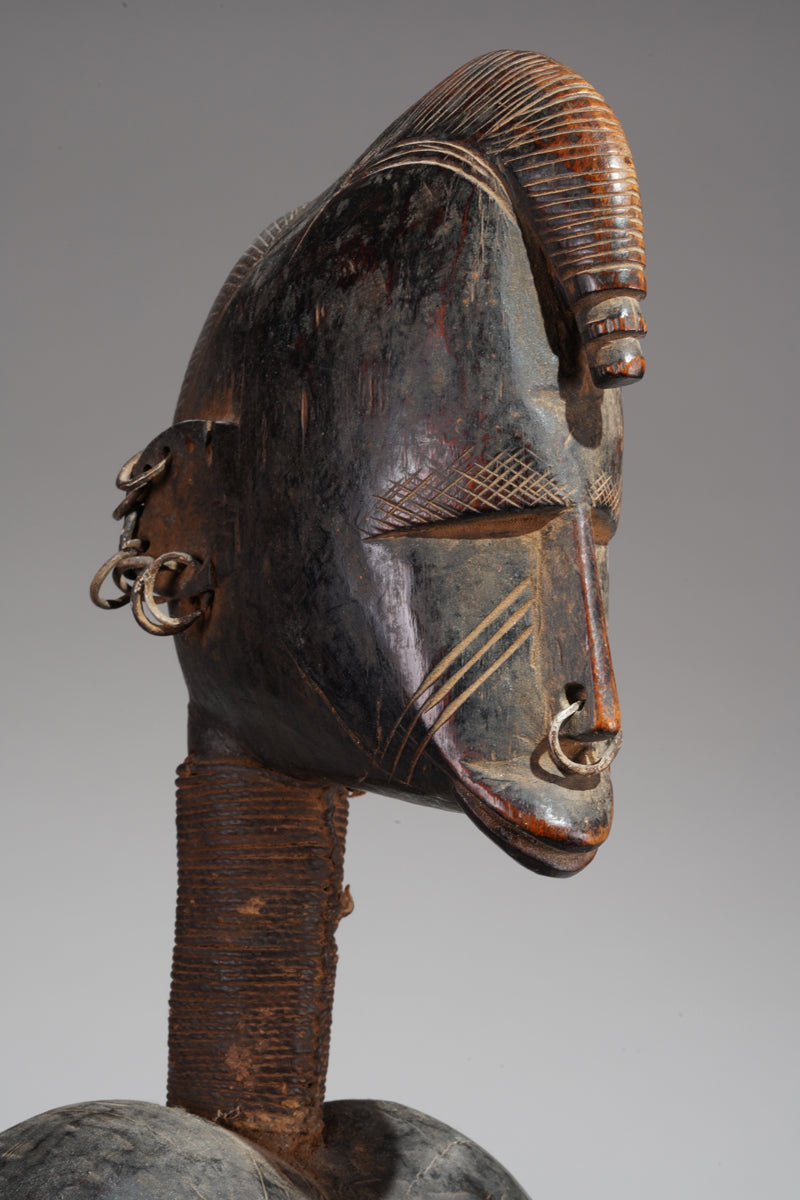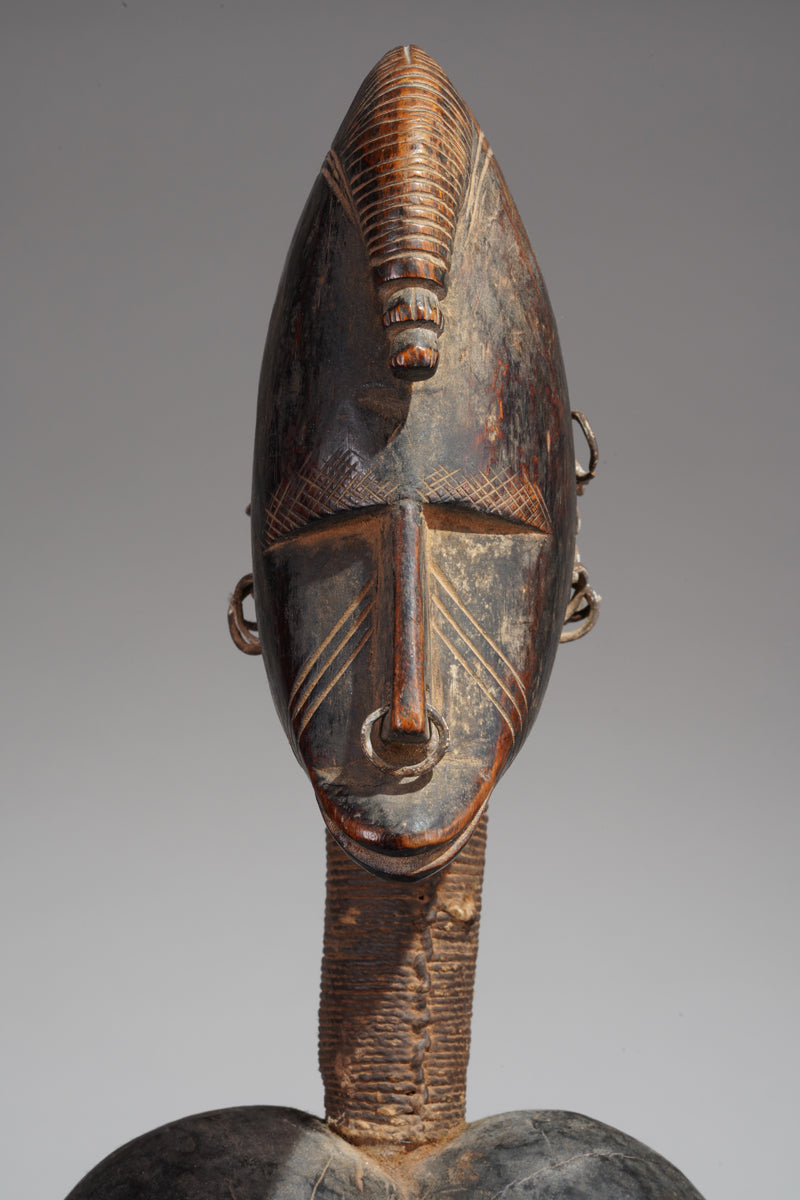wolfgang-jaenicke
A female Jonka sculpture
A female Jonka sculpture
Couldn't load pickup availability
A female Jonka sculpture, Mali, Bla region, collected close to the way from Segou to the border of Burkina Faso. According to local researches, four distinct ethnic groups live in the region: Senufo, Mianka, Bamana, and Bozo. The stylistic design of the very distinctive Jonka figures, which serve as a basis for the approximately 20 figures we collected in this region, is highly recognizable.
The wooden Jonka sculptures of the Bla region in southern Mali represent a distinctive and little-studied artistic tradition situated at the crossroads of Bamana, Minianka, and Senufo cultural spheres. These anthropomorphic figures, typically carved from wood, are characterized by elongated and stylized forms, frontal symmetry, and often abstracted facial features with geometric emphasis. Their posture is generally upright and rigid, conveying a solemn and timeless presence. The sculptures frequently bear traces of ritual use, including surface encrustations and patinas resulting from libations and offerings, which attest to their role in ancestral veneration and protective cults within local communities.
The exact ethnolinguistic attribution of the Jonka sculptures remains unclear, as the term “Jonka” appears to designate a regional or lineage-based identifier rather than a distinct ethnic group. Their formal features and contextual use suggest close affinities with the ritual objects of neighboring groups, especially the Minianka and Bamana, who maintain complex initiation societies and spirit cults in which such figures play an important role. The Jonka figures are thought to function as intermediaries between the living and the ancestors, serving as focal points for ritual invocation, protection against malevolent forces, and reinforcement of social cohesion within the community.
Despite their evident cultural significance, the Jonka sculptures have attracted limited scholarly attention. Many known examples entered Western collections during the late twentieth century without systematic documentation, leaving their precise provenance and ritual contexts insufficiently recorded. As a result, these sculptures occupy an ambiguous position in the corpus of West African wooden art, bridging well-known traditions such as the Bamana Komo society figures and the sacred Senufo carvings while retaining unique stylistic and functional characteristics. The study of Jonka sculptures thus offers valuable insights into the dynamic interactions of ethnic groups and ritual practices in the borderlands between Mali and Burkina Faso, highlighting the persistence of localized artistic expressions amid broader regional networks.
-
Pascal Imperato, African Folk Medicine: Practices and Beliefs of the Bambara and Other Peoples, (New York: Africana Publishing, 1977), pp. 115–120.
-
Jean-Paul Colleyn, Bamana: The Art of Existence in Mali, (New York: Museum for African Art, 2001), pp. 78–85.
-
Alain-Michel Boyer, Minianka: Les formes du visible, (Paris: Éditions Karthala, 2008), pp. 32–40.
Unpublished field notes and private collection catalogues, Mali and Burkina Faso, 1980s–1990s.
Height: 81 cm
Weight: 5 kg
